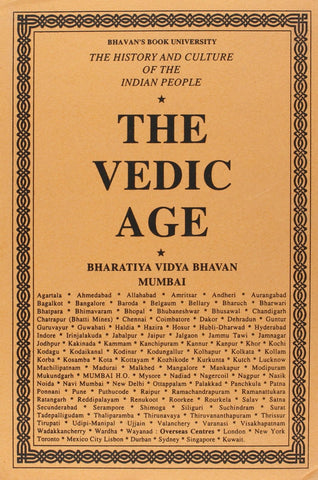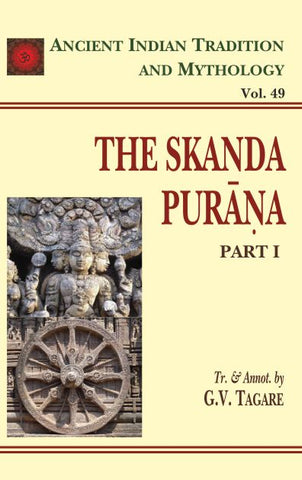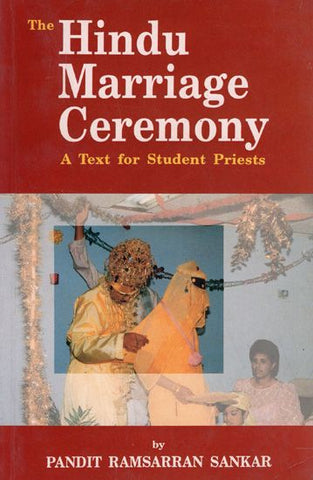Your cart is empty now.
Ancient Indians were a highly organized polity, with a well-established worldview of the Rajya (the State). And also of its seven distinct organs: svamin (the king), amatyas (the ministers), janapada/rastra (the territory and the people), durgas/pura (the forts / capital), kosa (the treasury), danda/bala (the army), and mitra tatha niti (the allies and inter-state relations). In their togetherness, these components of the state led political ideologues to advance the Theory of Saptanga: the 'seven limbs' each of which admitted varying emphases with ancient scholars, according to the changing political situations or their own predilections.
Besides traditional/ semi-historical writings, the Saptanga Theory of State finds recurring allusions in Kautilya's Arthasastra which, written sometime about the fourth century BC, remains the oldest surviving treatise of its kind on statecraft. Surprisingly, the Arthasastra itself, claims its author, is a compendium of the writings of as many as eighteen ancient teachers, like Manu, Brhaspati, Usana, Bharadvaja, Visalaksa, Prachetas, and Pisuna.
With bit-by-bit analysis of an astonishing mass of original, indigenous sources: Vedic, Puranic, epical, Buddhist, Jaina, and even non-Indian, Professor G.P. Singh tries to crystallize the political thought processes accompanying the evolution of state through the bygone centuries. Bringing fresh insights into the Saptanga Theory, his study dwells, at length, on all its seven time-honoured components and their variegated roles in lending support to the state. Also underscored here is the relevance of ancient Indian view to modern theories of politics and diplomacy.
A thoroughly documented work of equal utility to scholars and students, the monograph is supplemented by a comprehensive index and a glossary of non English words/phrases used in the text.
About the Author
Dr. G.P. Singh, Prof. of History at the University of Manipur, Imphal, has researched different aspects of ancient Indian history and culture over the past three decades. He has contributed numerous papers to national and international journals. His works that include The Kiratas in Ancient India: A Historical Study of their Life, Culture and Civilisation; Facets of Ancient Indian History and Culture; Early Indian Historical Tradition and Archaeology; Republics, Kingdoms, Towns and Cities in Ancient India, and Ancient Indian Historiography, have won the acclaim of scholars in the field. In 1989, Dr. Singh was elected the Fellow of the Royal Asiatic Society of Great Britain and Ireland, London. He has been recently nominated a member of Indian Council of Historical Research, New Delhi.
Preface
The present work primarily deals with the emergence of the State, evolution of kingship and inter-state relations in ancient India. These are some of the important aspects of ancient Indian polity. The details of the subject provided in the body of this volume are entirely based on the Saptanga theory of State, as propounded by ancient Indian political thinkers of different ages in their respective works.
The work is, by and large, based on the original sources (texts, translations and commentaries). In this regard mention may first be made of the Santi-parvan (Rajadharma Section) of the Mahabharata, which is the earliest valuable semi-historical record on Rajyasastra or the science of polity. The text concerned provides an exhaustive and trustworthy account of the origin and evolution of the state and kingship, inter-state relations, etc. The data contained in the Asramavasikaparvan of the Mahabharata are also of considerable historical importance. Like the Mahabharata, the Puranas the Matsya, Agni, Padma (Svarga-khanda) and Visnudharmottara also deal with the seven constituents (svamin, amatyas, janapada or rastra, durgas or pura, kosha, danda or bala and mitra) of the state. This was the popular concept of the 'Saptanga Rajya' in ancient India. The importance of these elements in the state formation process in early India has been highlighted in different sources in different ways.
The Vedic literature comprising the Samhitas the Rgveda, Atharvaveda and the Brahmanas Aitareya, Taittiriya and Satapatha, and the Valmiki-Ramayana also throw light on some aspects of the subject relating to the evolution of the institution of kingship and theory and practice of government in the contemporary times.
The Dharmasutras of Gautama, Apastamba, Baudhayana and Vasistha (c. 600-300 B.C.) and the Dharmasastras the Manu Smrti (written during the Sunga period, some time between c. 185-72 B.C.), the Yajnavalkya and Visnu Smrtis or Visnu Dharma-Sutra (C. 100-200 A.D.), the Narada and Brhaspati Smrtis (c. 200-400 A.D.) and Samkha Smrti (c. 600-900 A.D.) are very helpful for dealing with different aspects of the subject. The Manu Smrti, in particular, like Kautilya's Arthasastra is of inestimable value. The text contains the wealth of data on the subject concerned.
Among the 'Rajasastrapranetarah' or the pioneers in the field of science of polity, the name of Brahma (Prajapati) stands the foremost. He was the first to prepare a comprehensive code (Dandaniti), which has been referred to as 'Rajasastra' in the Santi-Parvan of the Mahabharata. It comprised several chapters on the constituents of the state, kingship, etc. He is also stated to have been the first to touch upon Dharma, Artha and Kama (called Tribargasastra). It was Visalaksha, who abridged the 'Rajasastra' of Brahma into 1,000 chapters and christened it as 'Vaisalaksha'. The compartmentalization of the science of polity into the Dharmasastra and Arthasastra was a development of the later period. Actually, the Rajyasastra, Rajadharma, Dandaniti, Arthasastra and Nitisastra-all stand for the science of polity in ancient India. Indra, the son of Bahudanti was the first to write a book on the Arthasastra, which was popularly known as the Bahudantaka. The famous Arthasastra of Brhaspati, called the Barhaspatya Arthasastra, which Vatsyayana (c. 300 A.D.) has referred to in his 'Kamasutra' (1.17), became the source of inspiration for many writers of Arthasastra of the later period. The name of Brhaspati also figures in the Ait. Br. (8.26). The Santi-Parvan of the Mahabharata, Yajnavalkya Smrti Kamandakiya Nitisara and Kautilya's Arthasastra also testify to the fact that he was one of the authors of Arthasastra. The 'Brhaspati Sutra' available in the present form and ascribed to the ninth to tenth century A.D. is believed to be the recension of the ancient text. It was Dr. F.W. Thomas, who edited and published it (Lahore, 1921). It was Brahspati from whom Indra learnt the first lesson of Arthasastra. The political thoughts of Usana (or Usanas), the author of Arthasastra, have been highlighted in the Santi-Parvan of the Mahabharata, the Kumara-Sambhava (3.6) of Kalidasa (the first century B.C.) and the Matsya Purana (252.3). The work of Usana has been referred to as the 'Dandanitisastra' in the Mudraraksasa (1.7) of Visakha Datta (placed between the fifth and sixth century A.D.). It was Usana, who abridged the Barhaspatya Arthasastra, which originally consisted to three thousand chapters. The text is not available, but it is generally believed that the Sukra-Nitisara was largely based on Usana's Danda-nitisastra or Arthasastra. The Arthasastra of Pisuna or Narada was known as 'Naradiya-Arthasastra'. Several verses have been quoted from the text in the Valmiki-Ramayana (Ayodhya-Manda, ch. 100) and the Mahabharata. Bharadvaja, son of Brhaspati, was also authority on Rajasastra and Arthasastra. Kaunapa-danta (identified with Bhisma) and Vatavyadhi (or Uddhava) also expounded their political theories in their works on Arthasastra. Dirghacarayana, the friend of Pradyota-Mahasena and the preceptor of his son Palaka of the Pradyota dynasty of Avanti, also belonged to the same tradition.
It seems that the composition of works on the Arthasastra had begun after Kalpasutras (c. 700 B.C.) and, particularly after Baudhayana-Dharmasutra (500 B.C.). From the study of the Jataka records (compiled between the fifth and second century B.C.), it appears that by c. 600 or 500 B.C. the Arthasastra had got its recognition as a chief work on the science of politics. By the end of about c. 200 B.C., which nearly marked the end of the Sutra period, the Arthasastra had emerged as an authentic work on Rajanitisastra.
It is worthy of note that the names of some noted early political thinkers like Visalaksha, Brhaspati, Prachetas, Manu, Usana, Bharadvaja, etc. have been mentioned in the Santi-Parvan (Chs. 57-59 and 116-118) of the Mahabharata.
Out of the eighteen Acaryas, who were authorities on the Arthasastra and precursors or forerunners of Kautilya, the names of fourteen, viz. Visalaksha, Indra (son of Bahudanti), Brhaspati, Sukra (popularly known as Sukracarya), Manu, Bharadvaja, Gaurasiras, Parasara, Pisuna, Kaunapadanta, Vatavyadhi, Ghotamukha, Katyayana and Charayana figure in his Arthasastra (1.7; 1.15; 1.16; 5.6; 8.1 and 3; 12.1). Their views, as quoted by Kautilya, have also been highlighted in the present work.
The Arthasastra of Kautilya (Also known as Visnugupta, and Canakya being the son of Canaka), which is one of the most important sources of our information about the subject under review, deserves special mention here. Its antiquity and authorship have always mention here. Its antiquity and authorship have always been the subject of controversy among the scholars. The evidences adduced in the text itself (Arthasastra, The evidences adduced in the text itself (Arthasastra, 15, 1, last but one verse) and Kamandakiya-Nitisara (4, 5, 7) and Dasakumaracarita (Ucchavasa 8) of Dandin (c. 500-650 A.D.) confirm the truth that the Arthasastra was originally composed by Kautilya, who overthrew the Nanda dynasty and installed Candragupta Magadha. Pt. Shamasastri, Pt. Ganapatisastri, N.N. Law, K.P. Jayaswal, Radhakumud Mukherji, R.G. Bhandarkar, Jayachandra Vidyalankar, V.A. Smith, H. Jacobi, Fleet, Hillebrandt and others support the view in favour of its composition by the minister of Candragupta Maurya. The views of J. Jolly, Winternitz and A.B. Keith, that the text concerned does not belong to Kautilya; the historical authenticity of its author can be doubted; it was not written earlier than the third century A.D. and it is not authentic one, appear to be fanciful, and hence, they can be dismissed In fact Kautilya's Arthasastra (a manifestation of Nitisastra and Dandaniti) consisting of six-thousand verses was composed for Candragupta Maurya around c. 300 B.C. K.P. Jayaswal's statement (Hindu Polity, Bangalore, 1981, App. C, Notes, p. 374), that it was written in the 4th century B.C., is perfectly valid.
The Nitisara of Kamandaka (also known as Kamandakiya-Nitisara) greatly based on Kautilya's Arthasastra and believed to be a recension of Sukra-Nitisara was composed probably about 400 A.D. in the Gupta age during the reign of Candragupta II (c. 375-414 A.D.), as it appears from the opening verse of the text, and not in the eighth century A.D., as held by Jolly and Winternitz (Jolly, Arthasastra of Kautilya, Lahore, 1923, p. 46).
It is very difficult to determine the exact date of composition of the original Sukra-Nitisara for manifold reasons. Divergent views are held by the scholars about its date. In all probability, it was written in the pre-Christian era. As Sukra flourished anterior to Kautilya, we may reasonably infer that he might have composed his Nitisara sometime before the fourth century B.C. But on the basis of the evidence, as furnished in the text itself (Suk. Niti., 2, vv. 361-69), one may ascribe it to the post-Sunga period. The text saw its several recensions between the fifth and the eighth century A.D. and then again between the eighth and the twelfth century A.D., which does not mean that it was originally written between the eighth and the twelfth century A.D. or between 1200 and 1600 A.D., as erroneously supposed by some scholars. Whatever may be the fact, the importance of Kamandaka-Nitisara and Sukra-Nitisara as two valuable authoritative works on the subject to be dealt with here cannot be denied.
It is curious to note that the Amarakosa of Amarasimha (ascribed to the sixth century A.D.) also deals with the Saptanga theory of state, but the information supplied therein is very scanty. However, we have found them of some use for our purpose.
Apart from the works mentioned above, some other Sanskrit texts like the Raghuvamsa and Malavikagnimitra of Kalidasa, Abhilasitartha-Cintamani (first four chapters) of Somesvara and Manasollasa of the Chalukya king Somesvara Deva (c. 1127-1138 A.D.), the Buddhist texts, Digha Nikaya (C. 450 B.C.), and the Jatakas, and the Jain works, the Adi Purana of Jinasena Suri (ninth century A.D.) and Nitivakyamrta of Somadeva Suri (tenth century A.D. and different from Somadeva of the eleventh century A.D. of Kashmir, the author of Kathasaritsagara), have also been found very useful for throwing side-light on the subject. The Nitivakyamrta is very often ascribed to c. 959 A.D. The accounts of classical historians like Megasthenes and Arrian, and others dealing with the invasion of Alexander the Great, are very valuable for getting a glimpse into the types of state, nature and functions of the state, etc. The epigraphic evidence has been cited in confirmation of the statements recorded in the literary and other sources.
The contributions made by Bhasyakaras (or commentators) and Nibandhakaras on Dharmasastra and Rajanitisastra in the medieval period (c. 1100-1650 A.D.) to the enrichment of our knowledge about the subject have been widely acknowledged. Some of the important works of this class are Rajanitikalpataru (a commentary on Samkha-Likhit Dharma-Sutra) of Lakshmidhara (c. 1100-50 A.D.), minister of Kanauja prince Govindachandra, the commentary on Yajnavalkya Smrti by Aprarka or Apraditya, (c. 1100-1130 A.D.), a Silahara king of Northern Konkan, Rajaniti-Ratnakar of Chandesvara (c. 1300-1370 A.D.) of Mithila School of Nibandhakaras on Dharmasastra, Rajanitimayukha of a Nibandhakar, Nilakantha (c. 1610-1645 A.D.), and Rajaniti prakasa, one of the twelve sections of a Nibandhakar, Nilakantha (c. 1610-1645 A.D.), and Rajaniti prakasa, one of the twelve sections of the famous work, Viramitrodaya (a commentary on Yajnavalkya Smrti), of a commentator, Mitra Misra (c. 1610-50 A.D.).
It is undeniable that quite a good number of scholars have already dealt with the subject in the past and I owe a debt of gratitude to them, but still we find some scope to throw new light on some of its aspects on the basis of the data contained in some original sources. The bearings of ancient Indian political thoughts on the modern political theories and international diplomacy have been focused here in detail. I am conscious of limitation of my knowledge of the political ideas and institutions in ancient India, and it is for the competent authorities on subject to judge as to how far I have succeeded in my attempt to present the details within a moderate compass.
All the seven constituents of the state including the king and the allies are inter-related and they cannot be separated from each other. For making an integrated approach to the study of the subject and for presenting its coherent picture, all have been treated as separate parts of one organic whole. However, in order to give a fuller treatment to each part the work has been divided into several chapters.
This short treatise, which is a piece of research work, will serve, as I do hope, as a book of ready use and reference to both students (particularly of the post-graduate level) and scholars interested in the study of ancient Indian polity with reference to the state, kingship and inter-state relations. If the book is found of any use, I shall consider my labour amply rewarded. I am well aware of the defects in the presentation of the subject matter. I crave the readers' indulgence for all the errors which have crept into the book.
| Preface | 5 | |
| Abbreviations | 17 | |
| 1 | The State (Rajya) | 21 |
| 2 | The King (Svamin) | 29 |
| 3 | The Ministers (Amatyas) | 63 |
| 4 | The Territory and the People (Janapada/Rastra) | 79 |
| 5 | The Forts/Capital (Durgas/Pura) | 95 |
| 6 | The Treasury (Kosha) | 103 |
| 7 | The Army (Danda/Bala) | 109 |
| 8 | The Allies and the Inter-State Relations (Mitra tatha Niti) | 115 |
| Glossary | 133 | |
| Index | 149 |
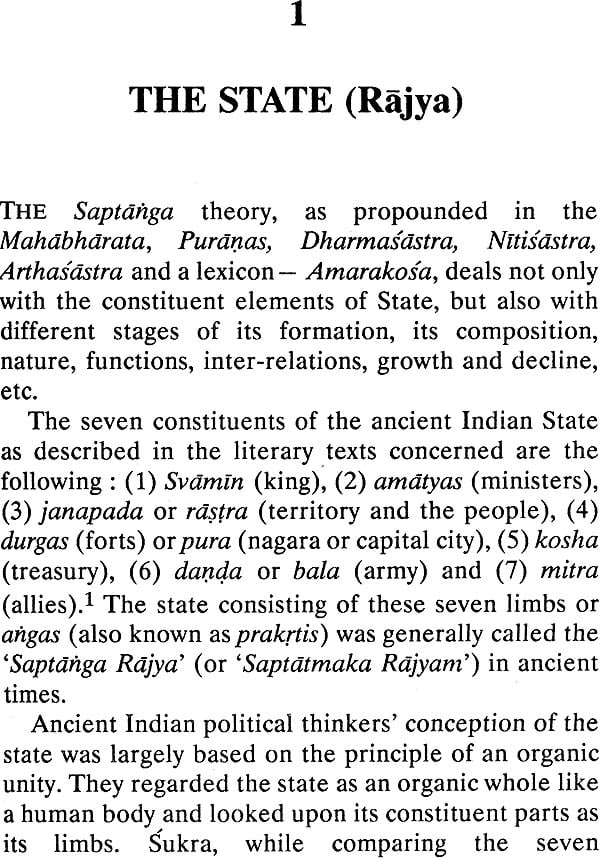


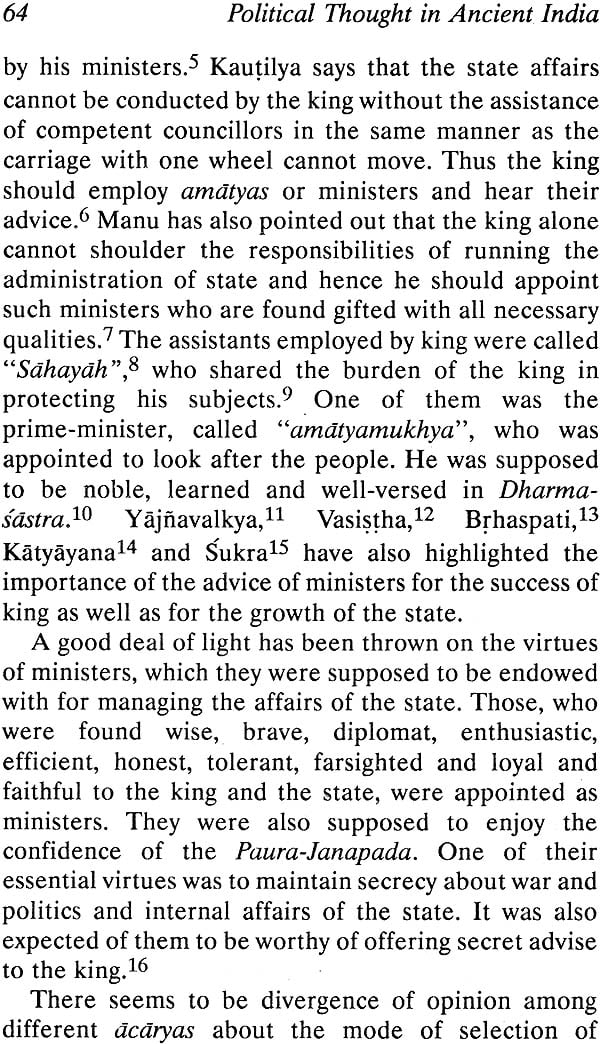
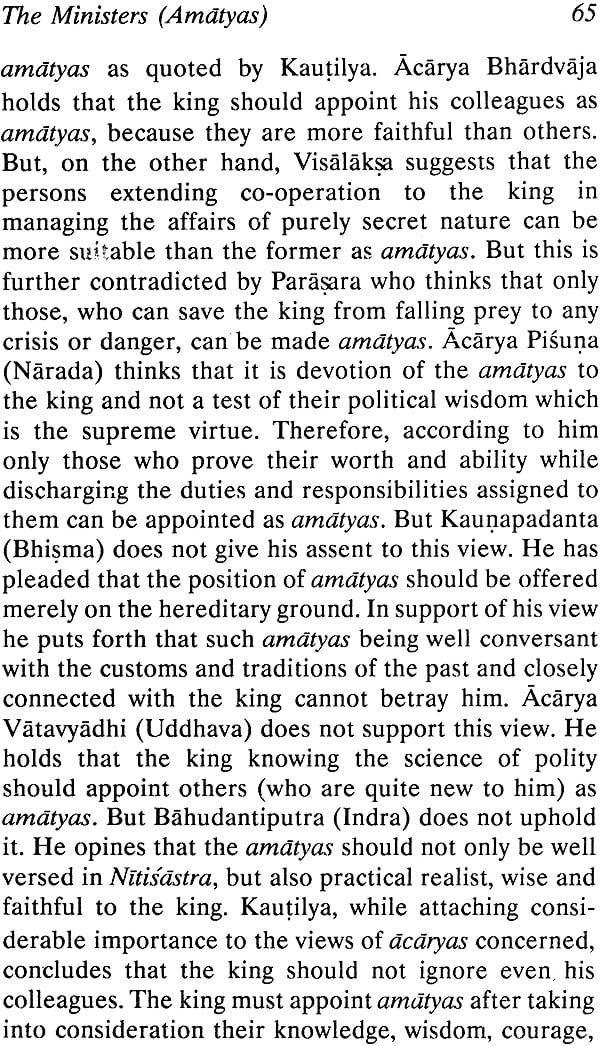
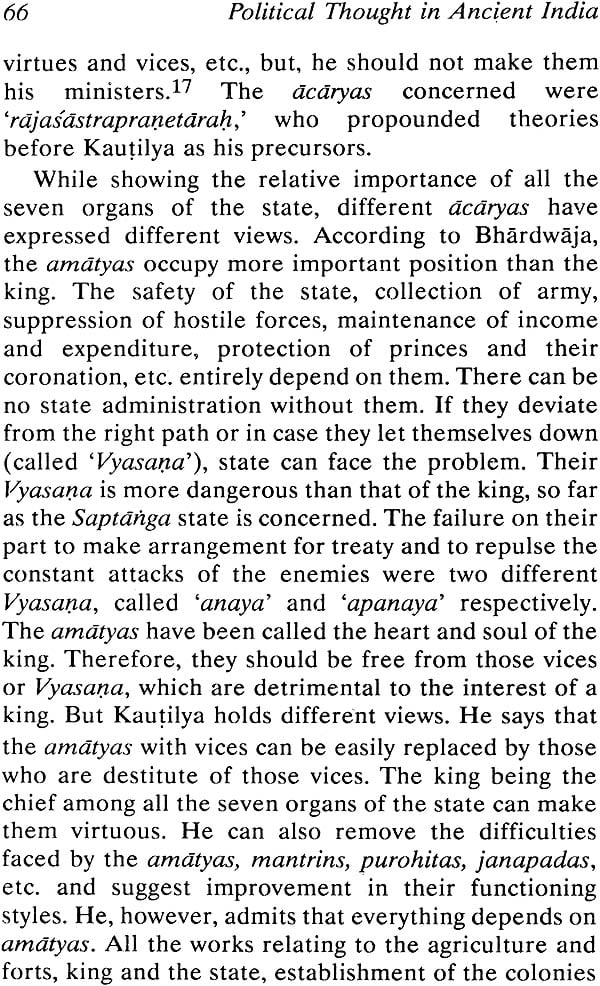
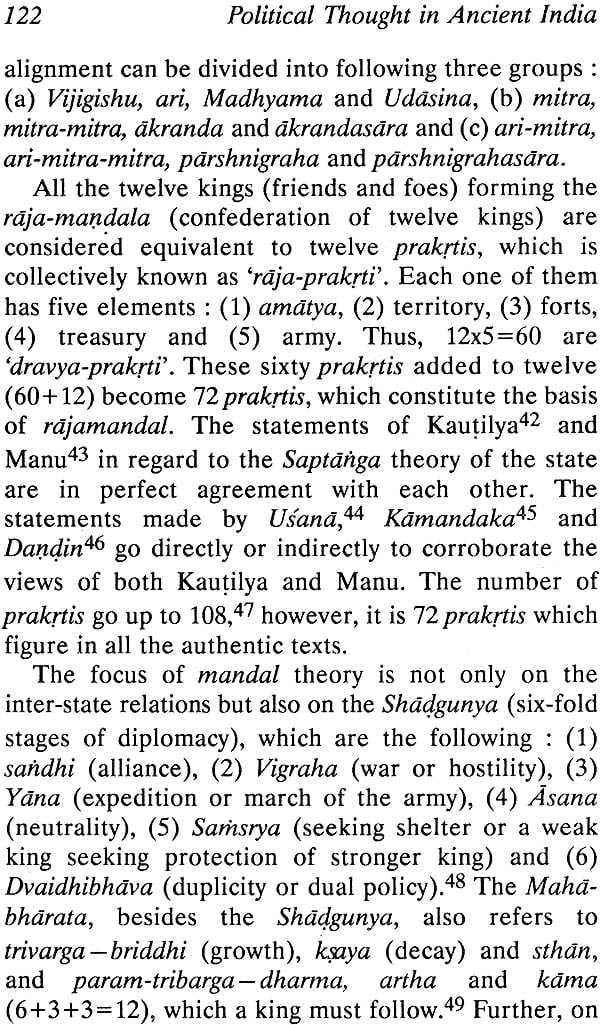
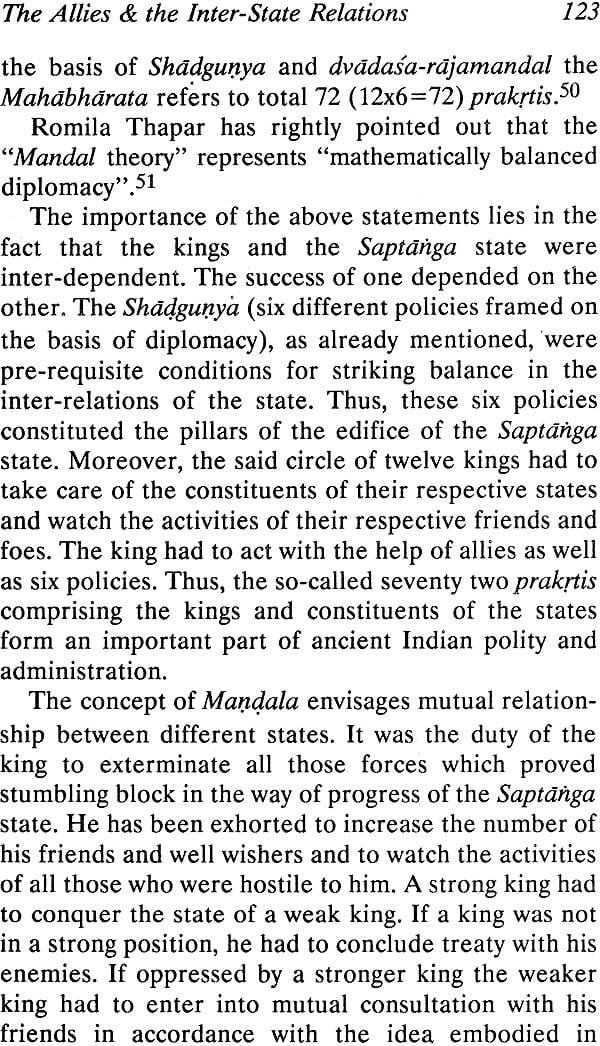
Delivery and Shipping Policy
- INTERNATIONAL SHIPPING
- Rs.1000-1100/kg
- ESTD. Delivery Time: 2-3 weeks (depending on location)
- Bubble Wrapped with Extra Padding
- NATIONAL SHIPPING
- NCR: Rs. 30/half kg
- Standard: Rs. 80/half kg
- Express shipments also available on Request
- ESTD. Delivery Time: Ranging from 1-4 days up to 7 business days (Depending on your choice of Delivery)
- TRACKING
- All orders; national or international, will be provided with a Tracking ID to check the status of their respective orders
- Depending on the Shipping Service, Tracking ID may be used on their respective tracking portals
Frequently Asked Questions (FAQs)
Domestic Shipping: 3-4 Days (after shipping)
International Shipping: 1-2 weeks (based on your location)
You will receive an email once your order has been shipped or you can email us if you didn't receive tracking details (info@mlbd.co.in)
Every book that we sell is the latest edition except all the rare books
Yes, we do provide free shipping, only on domestic orders (within India) above Rs.1500


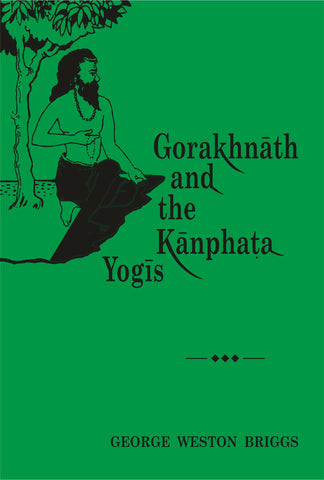
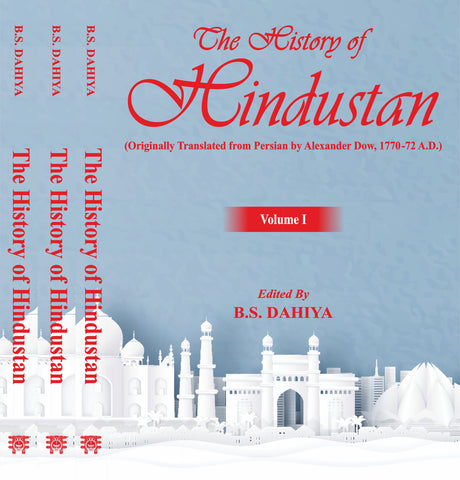
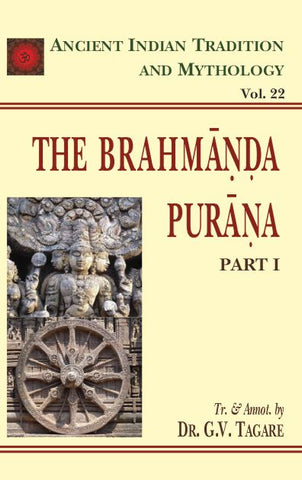
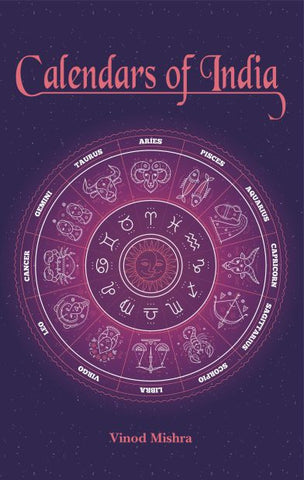
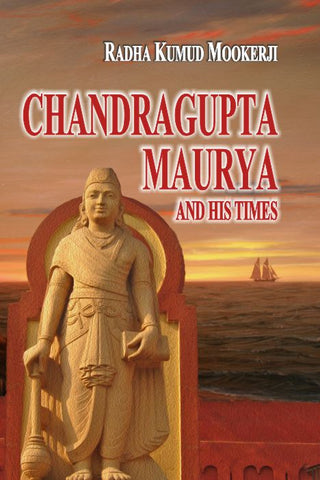
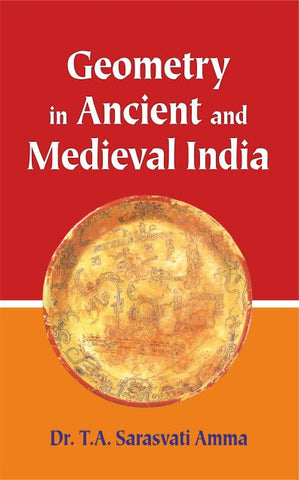
![A HISTORY OF INDIAN PHILOSOPHY [5 VOLUMES] by Surendranath Dasgupta](http://www.motilalbanarsidass.com/cdn/shop/products/HISTORYOFINDIANPHILOSOPHY_large.jpg?v=1675238163)
